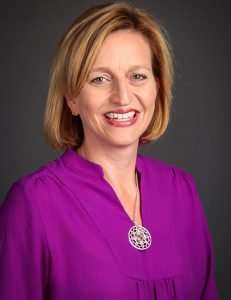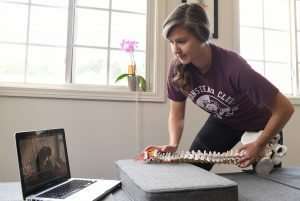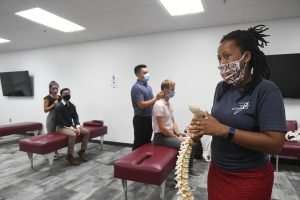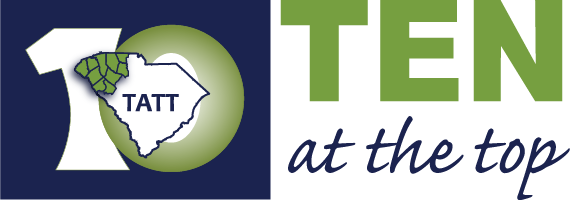
Karen Canup, MBA—COO/CFO, Sherman College
by Karen Canup, MBA—Chief Operating Officer/Chief Financial Officer, Sherman College of Chiropractic
What happens when a “hands-on” education suddenly becomes impossible? Sherman College in Spartanburg, SC, faced this very question when the COVID-19 pandemic reached a critical point this March.
At Sherman College, the only chiropractic college in the Carolinas, adaptation is a frequent topic of discussion. Doctors of Chiropractic help patients achieve optimal health and function without drugs or surgery, using their hands to gently adjust the spine to facilitate health and healing. Because chiropractic takes a preventative approach to healthcare, the body’s ability to adapt to outside stressors and forces is a central concept.
So when Sherman College leaders made the difficult decision to move to a distance-learning format at the end of spring quarter, adaptation had to happen, and fast. The enormity of shifting an entire face-to-face curriculum to a distance learning model cannot be overstated, but we were determined to continue providing the same top-quality chiropractic education we always have.
Thanks to the college’s iPad initiative, the transition went as smoothly as possible. Launched in 2016, iSherman provides every student with an iPad loaded with tools for success—including video tutorials, e-books, course syllabi, and more—at no additional cost. While iPads and other learning technologies have been part of our classrooms for some time now, their use became key to our online transition this spring.

Sherman College-With school being taught on line, Elizabeth Hodges keeps up with her technique class at her home adjusting area watching a video by Dr. Mitzi. May 14, 2020. (John Byrum photo)
Under the guidance of the department of Teaching and Learning, the Sherman College faculty rallied, recording welcome videos, modifying course plans, creating learning modules, scheduling virtual office hours, and developing discussion boards. We issued iPads to our academic support staff members to facilitate online advising and coaching, and we also moved our counseling services online.
Students took the changes in stride. They organized study spaces at home, and they created schedules and time management plans to ensure their success. They kept their clubs going, and they continued to look for ways to help others by collecting food, making face masks, and connecting with seniors in local care facilities.
Sherman College staff adapted quickly to working from home as well. IT assessed needs, issued laptops, and created training programs, all while completing a successful website launch. We shifted our annual homecoming event to a fully virtual platform, which had never been done before, and attracted more than 600 attendees.
The college quickly designed virtual campus visits and created a video tour, as well as an online virtual orientation for new students. We developed an application for students to apply for aid through the CARES Act and assisted students with scheduling challenges. We also launched the Sherman Pride Student Emergency Fund and have since raised more than $30,000 to support students facing financial difficulties.
Because communications have been paramount during this time, we have shared COVID-related updates, developed a brand guide and several new publications, and initiated some lighthearted social media projects like story time with Sherman (employees reading their favorite children’s books) on Facebook and TikTok.

Dr. Princess Porter-Fowler leads a Palpation l class on campus on Tuesday July 28, 2020.
In mid-March, the college made the difficult decision to temporarily close its on-campus Chiropractic Health Center, which serves the Upstate with more than 25,000 patient visits each year. While closed, the Health Center created new safety procedures and ordered plenty of PPE and sanitizing supplies. Since reopening in June, the clinic has expanded its hours of service (Monday–Friday from 9–12 and 2–5) and has again begun welcoming new patients. The clinic maintains careful procedures to provide the safest environment possible for patients, students, and employees.
Sherman is currently operating at stage three of its four-stage reopening plan with safety, security, and student success at the forefront of all college actions. For summer quarter, we remain in a distance-learning module, but we have begun offering limited (and voluntary) live instruction on campus for certain hands-on courses. Fall plans (stage four) are being finalized as we continue to monitor state, local, and national recommendations, but Sherman aims to take a big step toward normal operations by increasing the number of face-to-face classes meeting on campus to about 50 percent.
So while these are indeed times of great uncertainty, Sherman College has chosen to embrace adaptation. Our successes have required flexibility, teamwork, patience and dedication. Despite the circumstances against us, we haven’t slowed down, and we are excited to continue caring for our local community and educating our country’s next generation of doctors of chiropractic. We look forward with great anticipation to what the future holds for Sherman College of Chiropractic as we approach our 50th anniversary in 2023.
